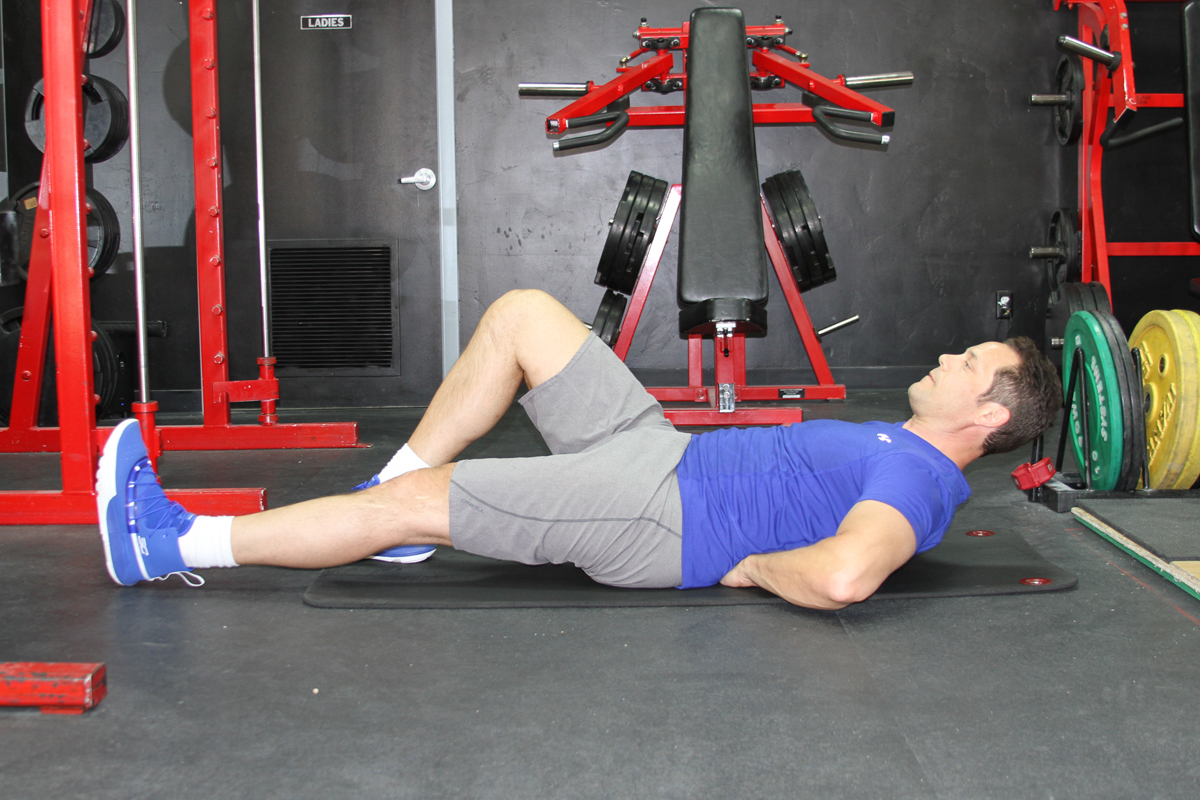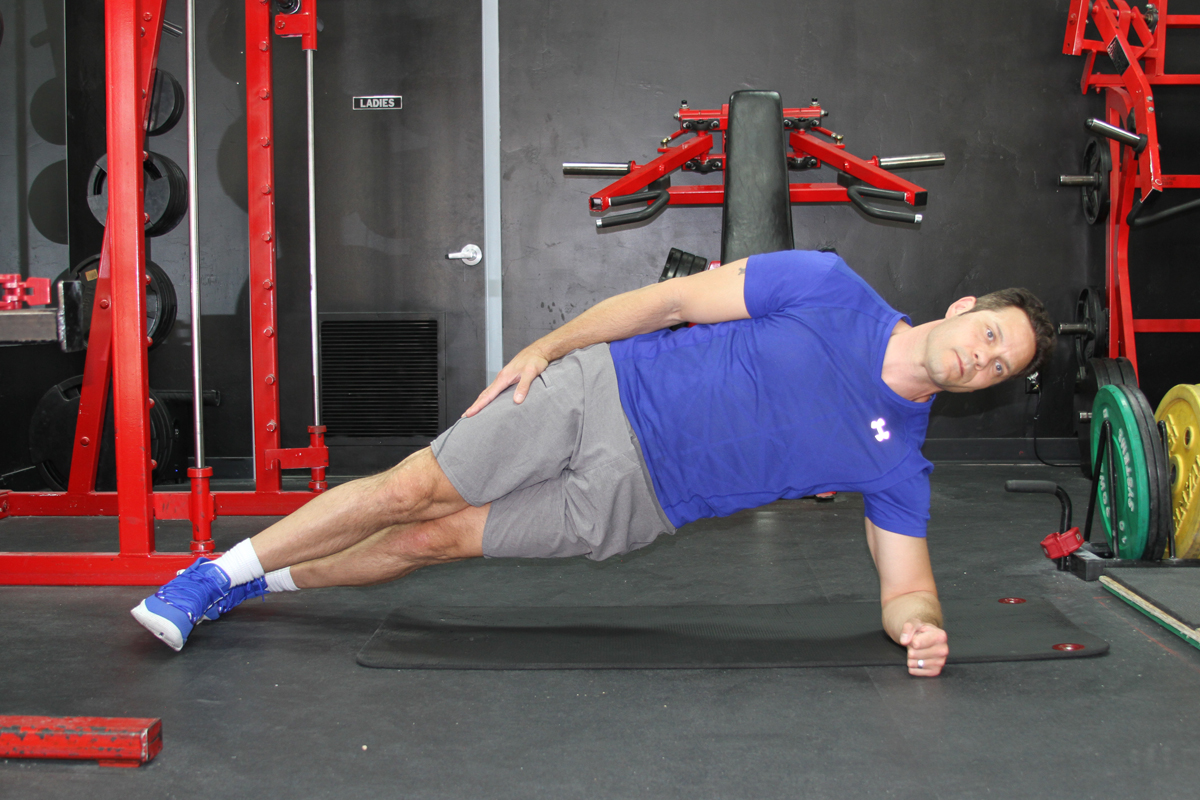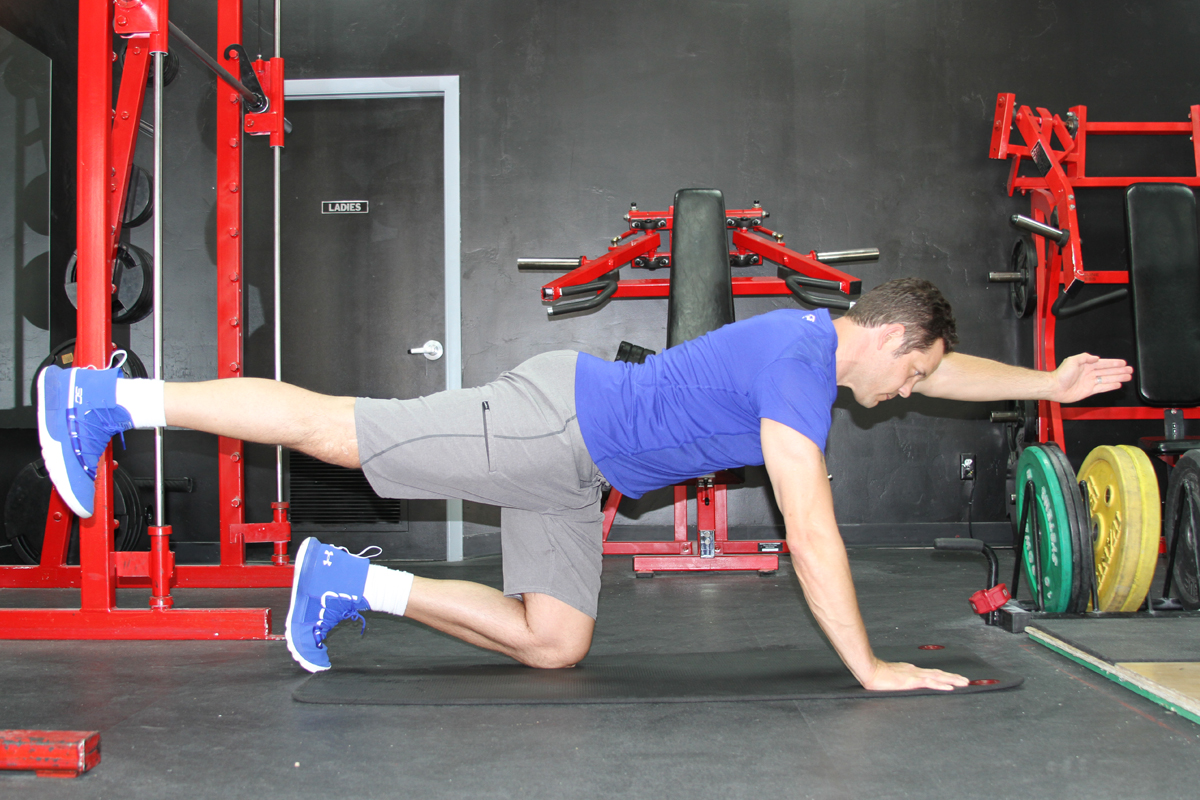Incorporating Transverse-Plane Core and Rotation Work
Learn how to train anti-rotation and rotation to help clients with daily life and sports.

When you watch someone hit a golf ball, throw a punch or simply retrieve groceries from the car, it’s evident that human movement occurs in all three planes of motion. Did you know that 87.5% of our core muscles are oriented either diagonally or horizontally? One action that these muscles perform is rotation (Santana 2000). The diagonal muscle orientation is proof positive that the human body is designed to rotate.
It is still common for many personal trainers to design programs that have a sagittal- and frontal-plane training bias. Those who do consider the transverse plane in their programming often—to their clients’ detriment—lack the requisite knowledge to coach and cue progressions that will optimize performance. This article explores how to train anti-rotation and rotation, why that’s important for daily life and sports, and how to safely and effectively train a client through a basic rotational progression.
Function and Form
The core’s function is not simply for forward bending, as in traditional situps. One main function of the core is to stabilize the spine and pelvis in a neutral zone, which enhances power transfer and reduces shear loading on the spinal disks (Colston 2012).
Research supports this concept by stating that core musculature is organized similarly to an architectural tensegrity model (McGill 2007). Think of an army tent with guy wires. The weight of the canvas provides some stability through compressive loading, but the main stability comes from the lateral guy wires that come off the frame in a 360-degree fashion, providing tensile loads. McGill proposes that core muscles function in a similar way, originating from and inserting at angles on the spine, pelvis and ribs. This “human guy-wire system,” when functioning properly, provides spinal stability through both compressive and tensile loads. The core’s guy-wire system not only reduces injuries by stabilizing the spine but also stores elastic energy for tasks that involve force production.
Baseline and Progression
The analogy of firing a cannon from a canoe comes to mind when considering the importance of core stability. One of the best examples of the core’s function in stability comes from research done by Juan Carlos Santana and team, in which they compared kinetic and electromyographic metrics for a standing cable press versus a traditional bench press (Santana, Vera-Garcia & McGill 2007). They found that individuals could bench-press only half of their body weight while standing, and when they failed during a standing press, core stability (or lack of it) was the limiting factor. Simply put, this indicates that stiffening the torso causes “power generated at the hips [to be] transmitted more effectively by the core” (McGill 2010).
Where does a trainer start if core stability is a limiting factor in power transfer and, at some point, transverse-plane loading needs to be introduced? McGill suggests beginning with three exercises that are excellent for preventing lower-back pain or for introducing clients to a core performance program (McGill 2007).
Modified curl-up, side plank and bird dog are known as the “the big three”—a perfect starting trio for most clients (below). Once a client is proficient in McGill’s ground-based big three, it’s time to progress to “the standing big three.” Although there can be many steps between ground-based core drills and standing versions, the Pallof press, cylinder rotation and horizontal chop with lead-leg step present a logical progression.
Optimizing the Transverse Plane
Human movement is a complex interplay of all three cardinal planes of motion, and rotational training should not be an afterthought. Regardless of fitness level or goals, a trainer must understand the importance of transverse-plane movement to help clients maximize performance and reach their goals. Once you understand the mechanics of motion in the lower back, mid back and hips, you’re ready to include rotational movements and, as appropriate, to start progressing clients from the big three to the standing big three. You now have a simple-to-follow transverse-plane exercise series to incorporate into your foundational movement training—a series that will enhance functional outcomes for your clients.
The Big Three
Stuart McGill, PhD, a leading researcher and core performance expert, advocates using movements he calls “the big three.” They offer a great starting point for most clients wanting to “bulletproof” the core and protect the lower back from injury.
MODIFIED CURL-UP FOR ROTATION COACHING
-
- Place one leg straight and bend other leg to 90 degrees, hands beneath lower back.
-
- Lift head and shoulders straight up toward ceiling (but not in traditional “crunching” motion).
-
- Engage core while changing spine’s position as little as possible.
- Perform three 10-second holds, then switch legs and repeat.
SIDE PLANK FOR ROTATION COACHING
This is a gold-standard lateral stabilization move that will light up the core.
-
- Lie on side and place top leg over bottom leg (heel to toe).
-
- Position elbow at 90-degree angle to torso.
-
- Brace core with minimal-to-moderate abdominal contraction and elevate torso off floor, maintaining neutral spine.
- Hold for 10 seconds, rest and repeat 3 times, each side.
BIRD DOG FOR ROTATION COACHING
This tri-planar exercise adds a transverse-plane component to the sagittal-plane modified curl-up and the frontal-plane side plank. When done properly, bird dog is surprisingly difficult because it poses balance and postural challenges.
-
- Start in quadruped position.
-
- Reach one arm forward and opposing leg straight back.
-
- Align lead arm, head, hips and leg.
- Hold for 10 seconds then switch sides, performing 3 sets per side.
For more exercises, plus a full reference list, see “Coaching Rotation Using Anti-Rotation” from the September 2019 print edition of Fitness Journal. If you cannot access the full article and would like to, please contact the IDEA Inspired Service Team at 800-999-4332, ext. 7.
Pete Holman, MSPT
Pete Holman, MSPT, is a physical therapist, certified strength & conditioning specialist and US National taekwondo champion and team captain. His passion for health and fitness has stimulated a successful adjunct career as an inventor. He produced several products, most notably the TRX® Rip Trainer and the Nautilus Glute Drive. Specializing in biomechanics, core performance and the aging athlete, Pete uses his experience as an elite level athlete and his unique knowledge of the human body, to bring out the athlete in us all. Pete is an active contributor to PTontheNet, IDEA Fitness Journal, STACK Magazine and IronMan Magazine.









